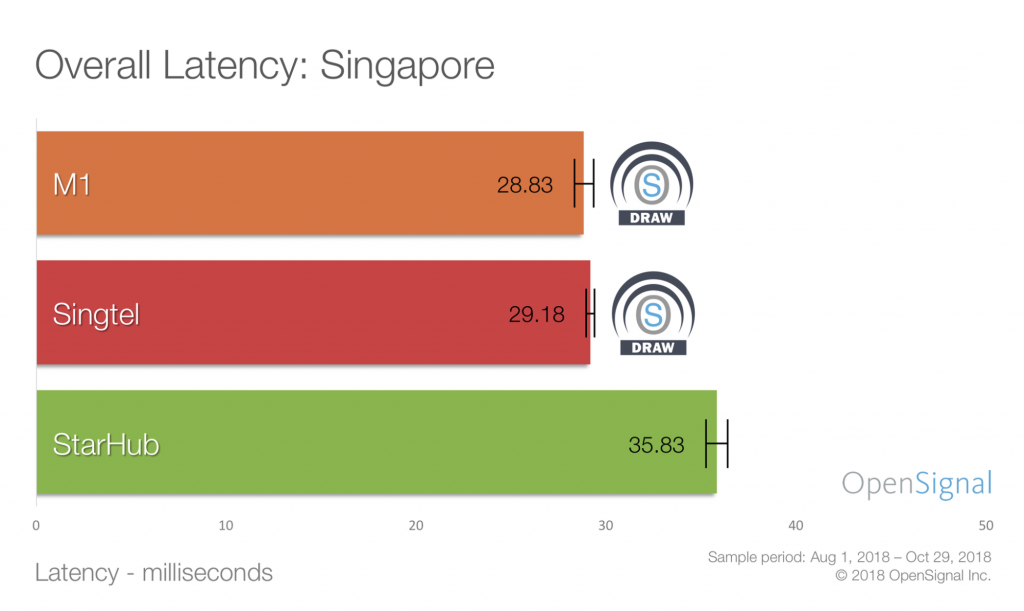When it comes to download and upload speeds, few countries can match the raw power of Singapore’s LTE networks. But Singapore doesn’t just shine in connection throughput. It’s also a global leader in latency, which is effectively the response time of a network. The lower latency is on a network, the better experience you’ll receive on a host of mobile applications and services, from web browsing to voice over IP to real-time multiplayer gaming.
Every time you click a link, press play on a video, or feint left in a server-hosted action game, your phone generates a data request, which must traverse the network, querying a server for content. The time it takes for that request to reach its destination and the data to be returned is the latency of the network. A similar principle applies to communications services like VoIP and video chat. The less delay the network introduces into the chat stream the more your session will behave like a real-time conversation, rather than two people talking over one another.
So what is a good latency? The lower the latency score, the better. Anything below 50 milliseconds is adequate for most applications we use on the mobile phones, but a latency of 30ms or less is exceptional. Very few of the 4G networks OpenSignal tracks are able to register sub-30ms latencies in our measurements, but according to our last State of Mobile Networks report, Singapore had two of them: M1 and Singtel. And their scores become even more impressive when we step back and look at overall latency. Users don’t always have access to an LTE connection, and as they go throughout the course of their days, they often find themselves falling back on 3G networks, which tend to have much slower latencies than 4G networks. So the true test of an operator’s network response time is its ability to maintain a consistently low latency across its 3G and 4G data networks.

As you can see from the chart above, Singapore’s operators excelled at maintaining that consistent experience. M1 and Singtel both had overall latency scores below 30ms in our measurements. Even though StarHub’s overall latency failed to cross the 30ms threshold in our analysis, at 35.8ms its response time was still excellent.
This means is that while Singapore has unquestionable fast download and upload speeds, its mobile data experience also shines in many other subtle ways. Those low latencies produce less lag time when video chatting or in a VoIP call, making conversations more natural. When a user clicks on a link or presses play on a online video, the requested webpage or clip begins rendering more quickly. And if you’re an online gamer, low latency is very welcome wingman. In multiplayer game modes, player reaction time is closely linked to network reaction time. An extra few milliseconds of latency might just mean the difference in a dogfight between taking down your opponent or going down in flames.
If you’re a mobile subscriber in Singapore, we’d love to hear about your experiences with latency-dependent services like video chat and real-time gaming. Tell us about them in the comments section below or on Twitter.
Opensignal Limited retains ownership of this insight including all intellectual property rights, data, content, graphs & analysis. Reports and insights produced by Opensignal Limited may not be quoted, reproduced, distributed, published for any commercial purpose (including use in advertisements or other promotional content) without prior written consent. Journalists are encouraged to quote information included in Opensignal reports and insights provided they include clear source attribution. For more information, contact [email protected].
